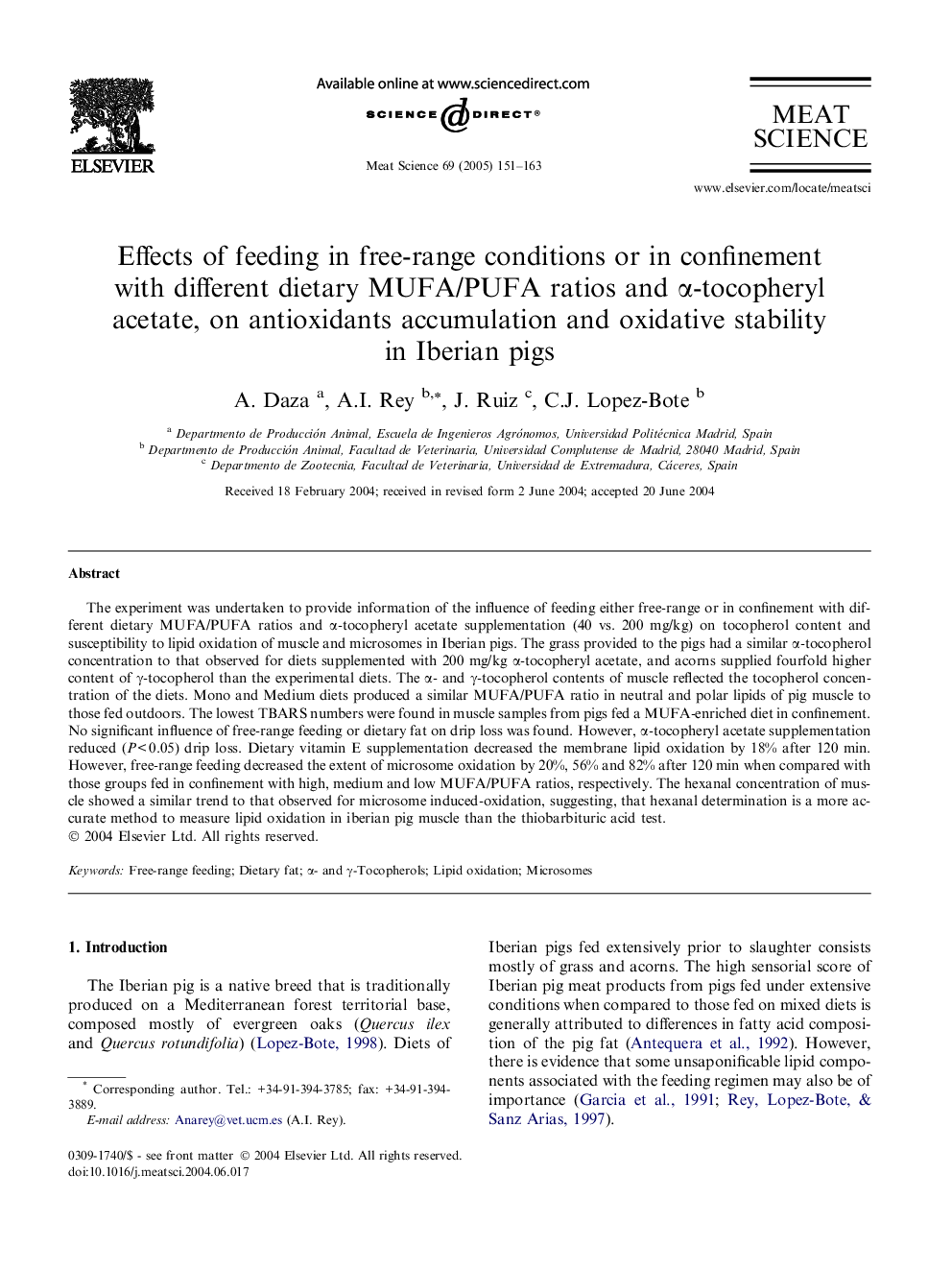| Article ID | Journal | Published Year | Pages | File Type |
|---|---|---|---|---|
| 8983716 | Meat Science | 2005 | 13 Pages |
Abstract
The experiment was undertaken to provide information of the influence of feeding either free-range or in confinement with different dietary MUFA/PUFA ratios and α-tocopheryl acetate supplementation (40 vs. 200 mg/kg) on tocopherol content and susceptibility to lipid oxidation of muscle and microsomes in Iberian pigs. The grass provided to the pigs had a similar α-tocopherol concentration to that observed for diets supplemented with 200 mg/kg α-tocopheryl acetate, and acorns supplied fourfold higher content of γ-tocopherol than the experimental diets. The α- and γ-tocopherol contents of muscle reflected the tocopherol concentration of the diets. Mono and Medium diets produced a similar MUFA/PUFA ratio in neutral and polar lipids of pig muscle to those fed outdoors. The lowest TBARS numbers were found in muscle samples from pigs fed a MUFA-enriched diet in confinement. No significant influence of free-range feeding or dietary fat on drip loss was found. However, α-tocopheryl acetate supplementation reduced (P < 0.05) drip loss. Dietary vitamin E supplementation decreased the membrane lipid oxidation by 18% after 120 min. However, free-range feeding decreased the extent of microsome oxidation by 20%, 56% and 82% after 120 min when compared with those groups fed in confinement with high, medium and low MUFA/PUFA ratios, respectively. The hexanal concentration of muscle showed a similar trend to that observed for microsome induced-oxidation, suggesting, that hexanal determination is a more accurate method to measure lipid oxidation in iberian pig muscle than the thiobarbituric acid test.
Keywords
Related Topics
Life Sciences
Agricultural and Biological Sciences
Food Science
Authors
A. Daza, A.I. Rey, J. Ruiz, C.J. Lopez-Bote,
